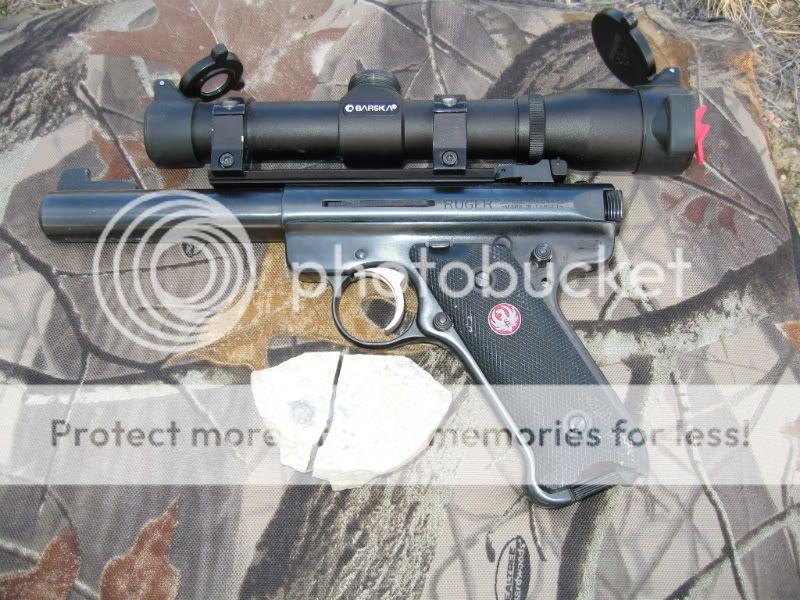I'm the type that's into the math behind reticle-rangefinding and downrange zeroing. Nice part about investigating the math is it can allow you to improvise systems for longer-range shooting, and i want to know all that can be accomplished with the systems i have at my disposal.
Here's an example of understanding the systems of application--

This was a 100-yd. connection on this little piece of shale using this Ruger Mk. III/2x Barska on the second shot. I was headed back to my vehicle after prairie dog shooting with the little rig, and saw the light reflect off the rock on the side of a hill. It lasered at exactly 100 yds. so i thought to see if i could hit it. I checked the dope on this little rig and using a 50-yd. zero i needed 6 MOA of compensation to get to 100 yds. I wanted to see if i could accurately break up the plex-style reticle that's in this little Barska. I had previously measured the subtension between x-hair axis and plex post tip (PPT) and it was 15 MOA. Although i couldn't exactly figure the amount of compensation for the shot intuitively, i knew that 4 x 15/10 was 6. So i figured then that if i held 40% of the way down to the plex post tip it should be a hit or at least close. I knew that was correct since 50% (half way down) would be 7.5 MOA. I shot and missed but couldn't see the impact. I knew the math was correct though so i decided to trust it again, and held the same interpolative spot along the reticle and hit it on the 2nd shot. It split in 2 and rolled down the hill. When i went up to it it was laying there in 2 pieces. That was a very rewarding calcd. shot using the math that Scot detailed above but instead of being a MOA or mil reticle it was instead a plex-style reticle which can be applied the same way--obviously.
There are 2 mathematical concepts i believe it's important (or at least handy) to know and that is the following--
1) Downrange zeroing or rangefinding using either reticle or turret is defined by the mil-ranging formula, by simply replacing each variable in the equation with the values of your system.
2) Reticle subtension is ~inversely proportional to magnification.
By understanding these 2 concepts it should be easy to see that reticle-rangefinding itself can be applied with any 2 points at any distance relative to any other 2 points at a different distance. I often appy this concept using a mil-reticle at a magnification that's higher than mil-calibrated.
If you're into math at all, the practical application of these concepts can often be quite rewarding.

